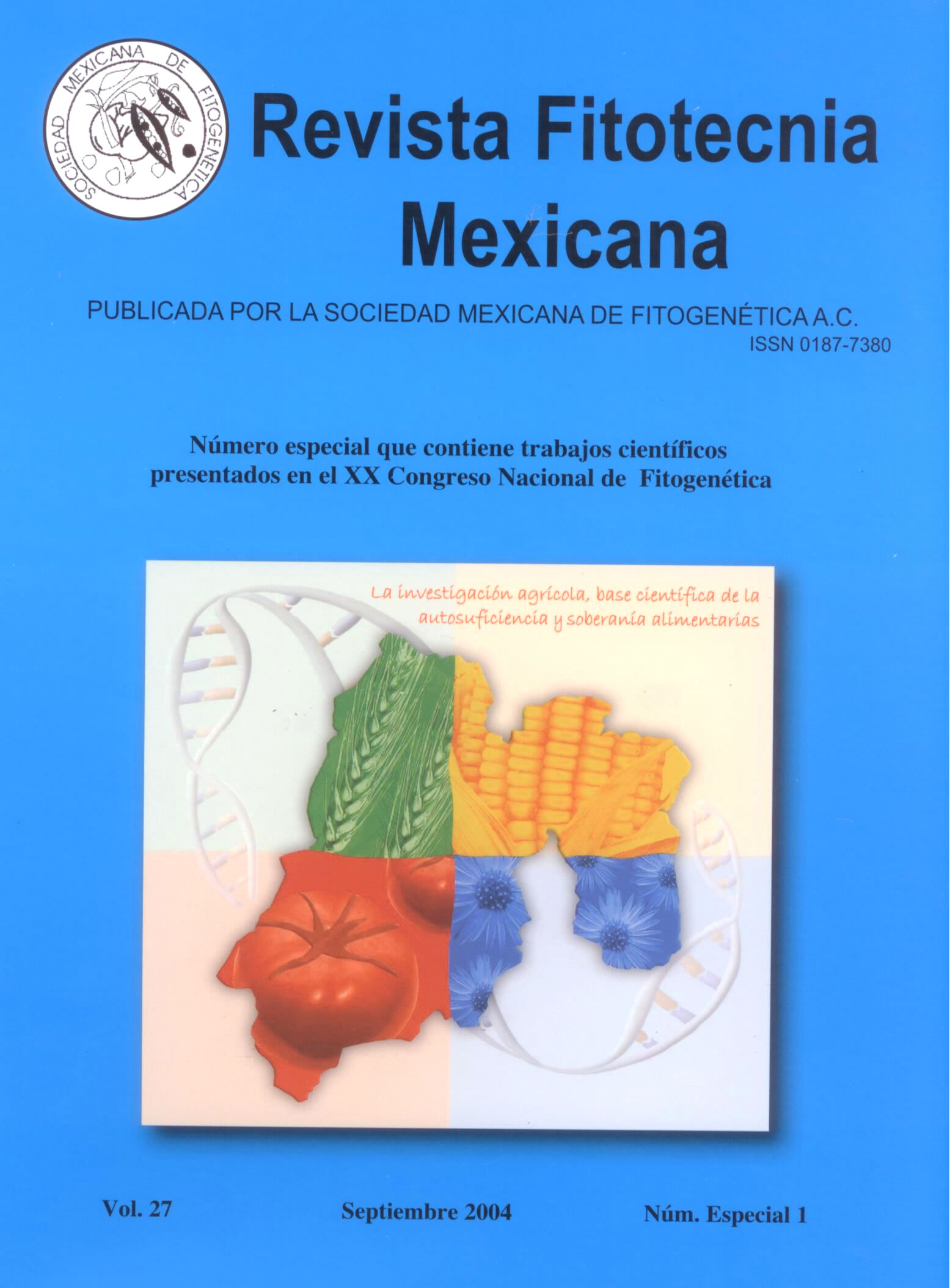COMPARISON OF SELECTION AND MANAGEMENT STRATEGIES APPLIED TO A LOCAL MAIZE POPULATION
Main Article Content
Abstract
Selection methodologies applied to local populations and in situ conservation of genetic variation are by definition two paradoxical strategies. The objectives of the research work were to compare four populations developed by different management and selection procedures, and to analyze the effects of selection on agronomic traits using the site and the local population as references. Four populations were studied: 1) A local adapted population (PO) from Jagüey de Ferniza, Saltillo, Coah.; 2) the first generation from the local population (G1), obtained through a seed production scheme; 3 and 4) two populations generated by the combination of local and improved germplasm, selected for early (SP) and late (ST) maturities, respectively. A set of 25 families was randomly obtained from each of four populations for evaluation in two locations during 2003, being the irrigated and rain fed environments, respectively. Results showed significant differences (P≤ 0.01) among populations for most recorded traits. A canonical discriminant analysis showed an overlap on the individual evaluated families; however, populations were characterized and grouped by sets of correlated traits in both environments. Populations PO and G1 were comparatively more diverse than SP and ST as an effect of the selection methodology. The relative magnitude on the difference was highly evident (P≤ 0.01) between the local population (PO) and the improved populations (SP and ST), as a contribution of the improved germplasm to the locally adapted population. Even though, there was not a significant difference between the locally adapted population and the seed production scheme at the rain fed location, there was a difference on ear yielding of 6.4 %; whereas, the difference between PO and SP population was in the order of 18.7 %. Populations showed differences on the agronomic performance, which are directly related to the procedure and selection criteria evaluated, and the contribution of the improved germplasm to the local adapted material was shown on ear yielding.

